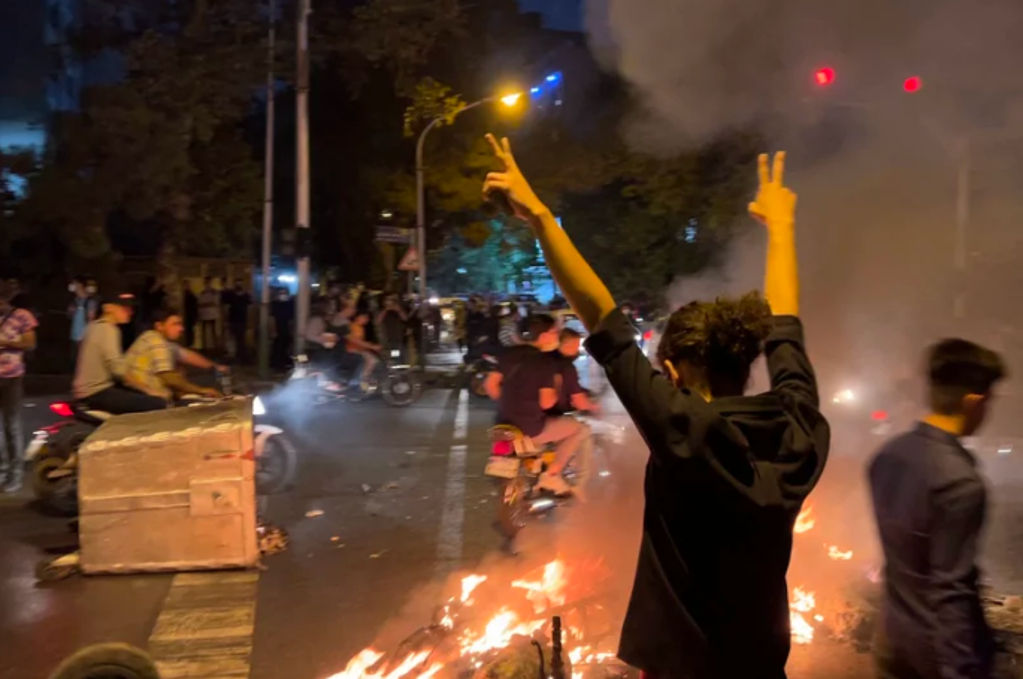In the early 1980s, in the unlikely setting of a northern Idaho college town, I befriended two young Iranian women, A and M. (I have disguised their names because the reach and memory of repressive countries last forever.)
Before Mohammad Reza Pahlavi, the last shah of Iran, was overthrown in 1979, A and M had escaped the Shah’s cruel tenure and his malicious secret police known as SAVAK to begin a new life in the United States. Their parents’ whereabouts were unknown.
Over a platter of fresh fruit and dates, the women, who were attending the University of Idaho where I was also a student, were pointing at pictures of their friends in a Tehran high school yearbook.
A: “She is dead. She is missing. Her parents were tortured and killed.”
M: “I think she is still in Evin [Iranian’s infamous prison], but no one knows. She was my cousin.”
Fifteen years later, I befriended another Iranian student, T. She and her sister had also fled Iran, via Switzerland, not to elude the grasp of SVAK and the Shah, but, instead, to escape the demeaning misogyny of Iran, specifically the Revolutionary Guard and the “morality police.”
By then, the popular revolution’s dream of a more free and open society had been dashed when Ayatollah Khomeini returned to Iran from his exile in France and became the country’s first Supreme Leader for life. Instead of a more secular government that the majority of Iranians had wanted — one with fair elections, just courts, and more freedoms for women — Khomeini instituted an Islamic theocracy that lives on long past his death in 1989.
Protests
Currently that legacy is being fiercely challenged by young women seeking freedom, not unlike A, M, and T. And those widespread protests, the likes that have not been seen in since the 1979 revolution against the Shah, are being brutally put down by the clerics and their thugs.
The accelerant was the death of 22-year-old Mahsa Amini, who the morality police detained for her “improper” wearing of the hijab. How she died in custody remains a mystery, but given the regime’s unchecked and Gestapo-like reputation for arbitrary viciousness, it appears obvious that she was probably tortured and killed.
The burning of hijabs on the streets of Iran is just one means of resistance among the courageous protestors. Recently a government television was hacked for 10 seconds with the words, “the blood of our youths is on your hands.” The pictures of four women killed by Iranian security forces were displayed along with the Supreme Leader’s face in crosshairs.
But demonstrators’ rocks and fires, cyber hacks, and anti-government chants are no match for bullets. According to Amnesty International, some 134 protestors have been killed. As The New York Times reported, in Iran’s ethnic Baluch region of Zahedan, as Friday prayer was ending at the Great Mosalla mosque on September 30, government snipers, police officers, and possibly members of the Islamic Revolutionary Guards Corps (who have denied involvement) opened fire killing 66 to 96 worshipers.
Here is one eyewitness’ description of what residents now call “Bloody Friday” from the Times: “’It was a massacre I had only seen in movies,’ said Jamshid, 28, a worshiper, who was reached by phone and identified himself only by his first name to avoid reprisals. ‘They started shooting as people still had their heads bowed in prayer.’ Young men threw themselves in front of children and older people to shield them from the bullets, Jamshid said. ‘People had nowhere to go.’”
Then came the lies from the government that bad outside agitators had come into Zahedan “with the aim of turning the protests into violence, chaos and a massacre of innocent civilians and police forces.” This is the usual balderdash served up by repressive regimes.
The truth is that people not only in Iran but around the world — from Tibet to North Korea to Russia — long for the freedoms that we in the West enjoy and often take for granted. When citizens express that desire through Arab Spring-style sit-ins or through guerilla-style tactics, they are putting their lives on the line against more powerful autocratic and theocratic forces. Still, the seeds germinate.
Repression kills imagination and stunts creativity. Doors close on possibilities as your world shrinks to a geography of fear. But a government can never really kill ideas or muzzle individual cravings. The embers never die.
In Iran, one such craving is simply for a woman not to wear the hijab if she so wishes. Not to be married off at the age of nine. Not to be rounded up and taken to clinics for humiliating virginity checks. Not to have the morality police wipe away makeup with a razorblade embedded in a handkerchief.
I lost touch with my Iranian friends long ago. But I remember them today as I watch a younger generation of Iranian girls and women continue to fight to enjoy the simple pleasure of feeling the wind in their hair and sunlight on their skin without the threat of being detained and possibly murdered. And to finally imagine themselves as they truly wish to be: free to dream of a future.



